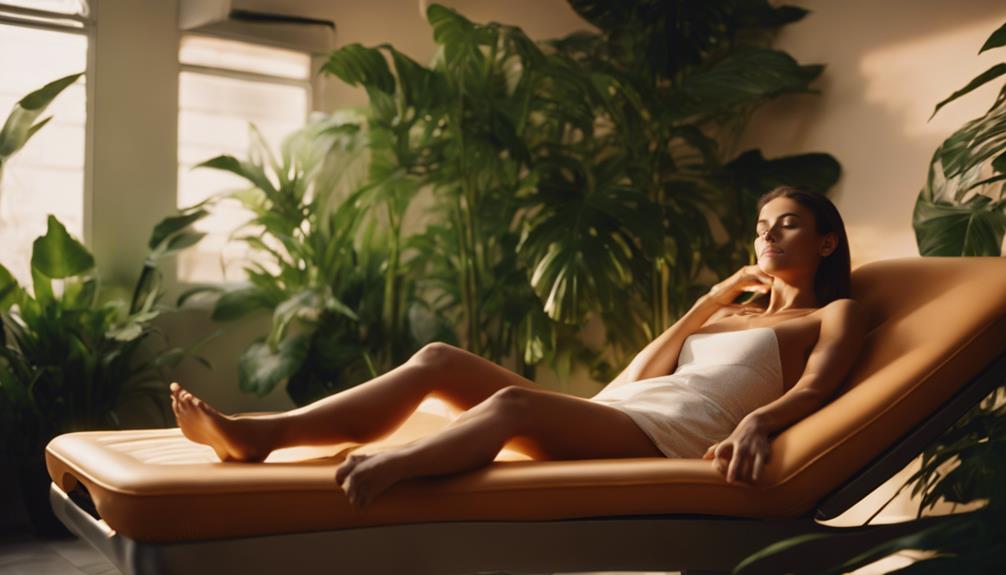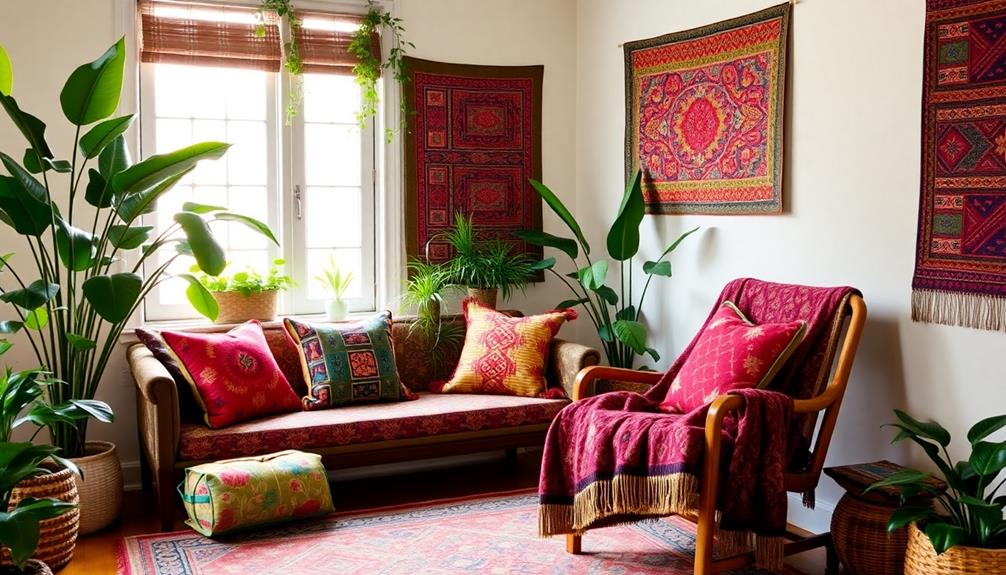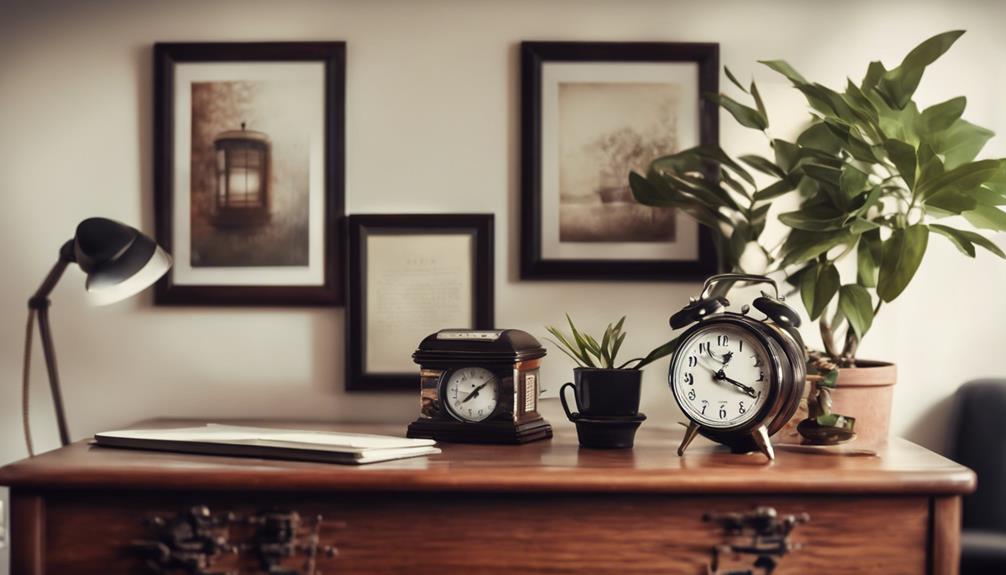Indoor tanning is not as safe as you may believe. It significantly raises your chances of developing skin cancer, especially melanoma, particularly if you are under 35. While you may like having a tan, it is important not to overlook the lack of significant health benefits and the potential eye damage caused by UV rays. Even with proper salon safety standards and etiquette, like using protective eyewear, the risks remain high. It is crucial to limit your tanning sessions and understand your skin type. Therefore, if you wish to learn more about the best tanning practices and safer alternatives, continue exploring your options. When it comes to indoor tanning, it is vital to be aware of the potential risks and take necessary precautions. Educate yourself on smart salon tanning tips, such as avoiding excessive exposure and gradually building up your tan. Additionally, consider trying alternative methods like self-tanning lotions or spray tans to achieve a healthy glow without the potential harm of UV radiation. Moisturizing is also a critical aspect to consider for both indoor and outdoor tanning. Well-hydrated skin can help your tan last longer, prevent peeling, and dryness. Look for moisturizers specifically formulated for tanning, as they can enhance and maintain your tan while keeping your skin healthy. Remember, safe tanning practices and healthy skin are interconnected.
Key Takeaways
- Indoor tanning significantly increases the risk of skin cancer, particularly melanoma, especially for individuals under 35 years old.
- There are no substantial health benefits to regular indoor tanning; the risks often outweigh any perceived advantages.
- Protective eyewear is essential when using tanning beds to prevent potential eye damage from UV exposure.
- Following salon safety standards and proper etiquette can reduce some risks, but they do not eliminate the dangers associated with tanning beds.
Understanding Health Risks
When you step into a tanning bed, it's crucial to understand the serious health risks that come with it, especially the heightened risk of skin cancer. The UV rays emitted can considerably increase your chances of developing melanoma and other skin conditions.
Regular exposure offers no substantial health benefits, so the potential harm far outweighs any perceived gain. This risk is particularly alarming for those under 35, whose skin is more vulnerable.
Additionally, tanning beds can lead to eye damage and suppress your immune system. Forget the myth that base tanning protects you; it actually compromises your skin health instead.
Prioritizing your well-being means being aware of these dangers before choosing to tan indoors.
Types of Tanning Beds
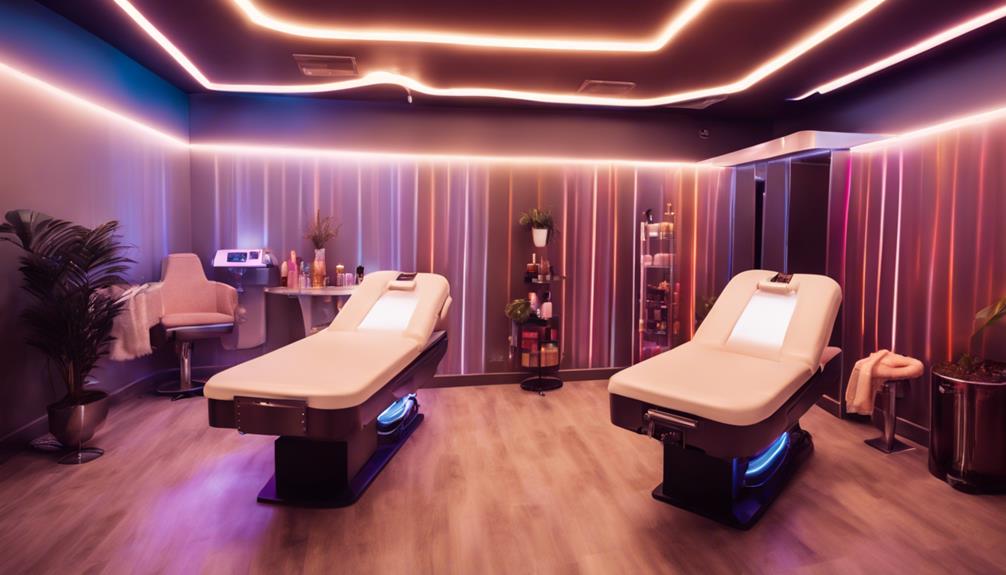
Understanding the different types of tanning beds can help you make informed choices about your tanning experience while being mindful of the associated health risks. Here's a quick overview of the main types:
| Tanning Bed Type | Features | Ideal For |
|---|---|---|
| Horizontal Beds | UV bulbs above and below for lying down | Comfortable sessions |
| Vertical Booths | Standing sessions for even tanning | Quick tanning experiences |
| High-Pressure Beds | More UVA and fewer UVB rays, reducing burns | Faster, deeper tans |
Each bed type caters to varied preferences and tanning goals. Knowing these options lets you select a bed that aligns with your desired results while considering safety.
Tanning Bed Etiquette
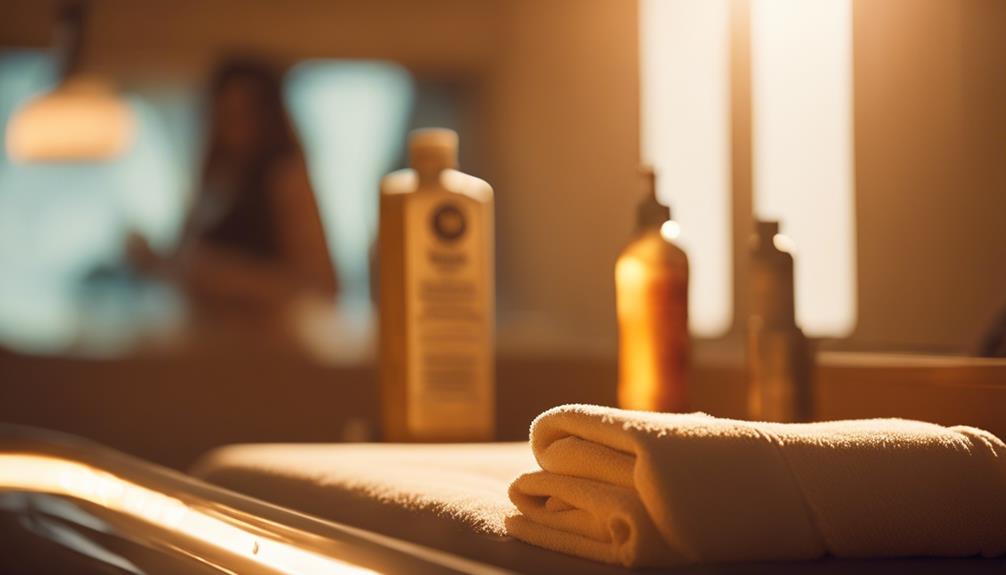
Practicing good tanning bed etiquette guarantees a safe and pleasant experience for everyone in the salon. You should always be mindful of others and follow these key practices:
Clean the bed: Always wipe down the tanning bed after use with the provided sanitizing wipes to maintain a hygienic environment for the next user.
Wear protective eyewear: Don't skip the goggles! They protect your eyes from harmful UV rays, keeping your vision safe.
Limit your time: Stick to recommended tanning times based on your skin type. Overexposure can lead to burns and health issues.
Salon Safety Standards
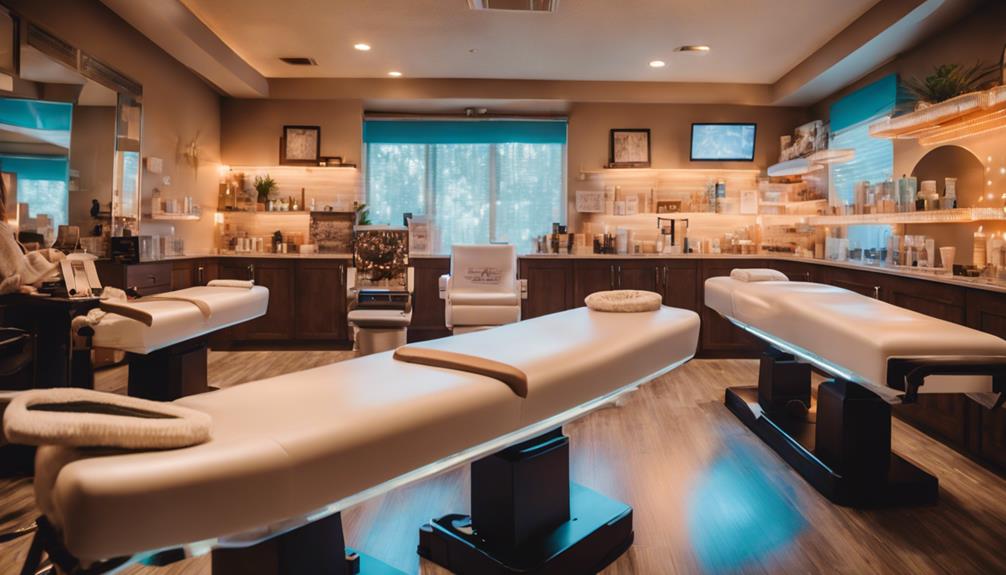
Guaranteeing salon safety standards is crucial for protecting both your health and the well-being of others who use tanning beds. When selecting a salon, make certain it follows strict protocols. Check for cleanliness, proper equipment maintenance, and trained staff. This can greatly reduce health risks associated with tanning.
| Safety Standards | Importance |
|---|---|
| Regular bed cleaning | Prevents skin infections |
| Equipment inspections | Guarantees safe operation |
| Staff training | Promotes proper hygiene |
| Use of protective eyewear | Safeguards your vision |
| Client health assessments | Identifies individual risks |
Safe Tanning Practices
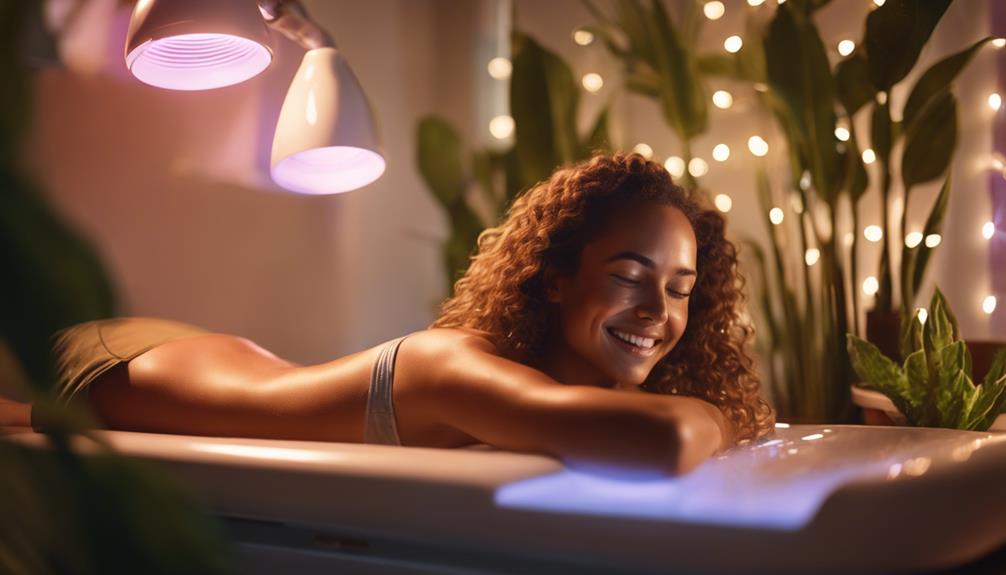
Following salon safety standards can set the stage for implementing safe tanning practices that protect your skin and overall health.
To maximize your tanning experience while minimizing risks, consider these essential tips:
- Use sunscreen: Always apply a broad-spectrum sunscreen to shield your skin from harmful UV rays, even when using tanning beds.
- Know your skin type: Understand your skin's sensitivity to UV exposure to avoid over-tanning or burns.
Post-Tanning Skin Care
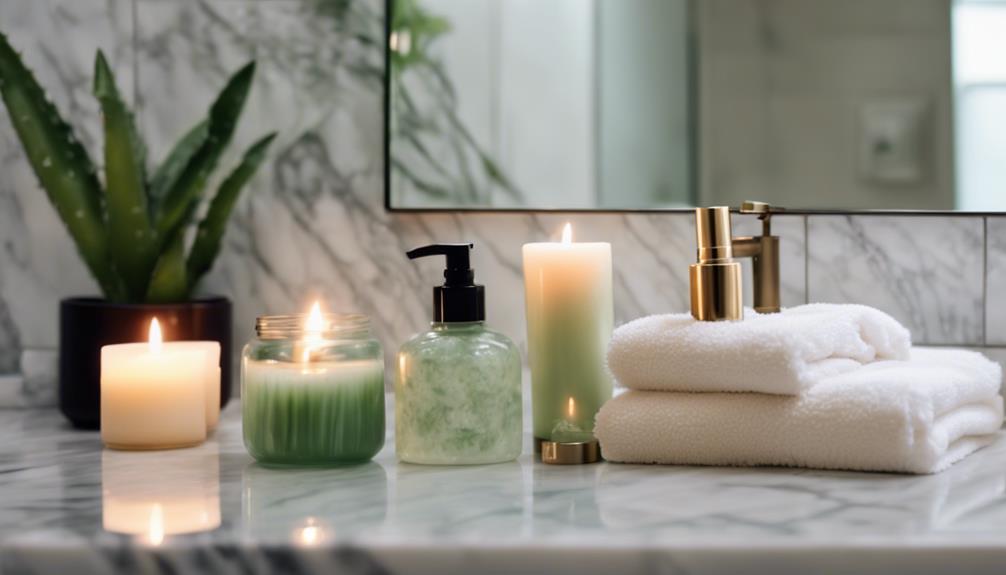
Caring for your skin after tanning is essential to maintaining its health and prolonging your tan.
First, apply a good moisturizer immediately after your session to lock in moisture and keep your skin hydrated. Aloe vera gel is excellent for cooling and soothing any irritation.
Drink plenty of water to support skin hydration from the inside out. Before going to bed, use a gentle after-sun lotion to nourish your skin further.
Avoid any additional tanning for at least 24 hours to let your skin recover and maintain your tan's vibrancy.
Legal Restrictions and Alternatives
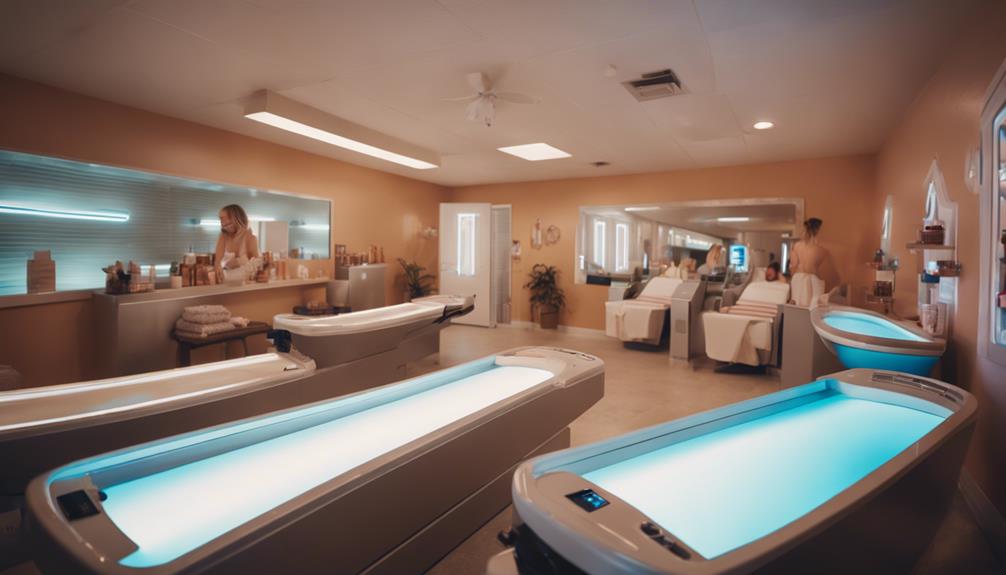
Many regions have legal restrictions that prohibit minors from using tanning beds due to the significant health risks associated with UV exposure. These laws aim to protect younger individuals from the dangers of skin cancer and other complications.
Instead of tanning beds, consider safer alternatives that promote a healthy glow without the risks:
- Sunless tanners: These products provide a temporary tan without UV exposure, allowing you to achieve your desired look safely.
- Bronsers: Instant bronzers offer a quick fix for events, easily washed off at the end of the day.
Prioritize your skin's well-being and make informed choices about tanning.
Frequently Asked Questions
How Long Should I Wait Between Tanning Sessions?
You should wait at least 24 to 48 hours between tanning sessions. This allows your skin to recover, reduces the risk of burns, and helps maintain a healthy tan while protecting your skin from damage.
Can Indoor Tanning Help With Vitamin D Deficiency?
Indoor tanning isn't a reliable solution for vitamin D deficiency. While UV exposure can boost levels, the risks of skin damage and cancer often outweigh any potential benefits. Consider safer alternatives like supplements or natural sunlight.
Are There Any Benefits to Using Tanning Beds?
Tanning beds don't offer significant benefits; they primarily pose health risks, including increased skin cancer chances. If you're seeking a tan, consider safer alternatives like bronzers or sunless tanners for healthier options.
What Skin Types Are Most Susceptible to Tanning Damage?
Imagine a delicate flower under harsh sunlight; similarly, fair and sensitive skin types are most susceptible to tanning damage. Their fragile nature easily burns, leading to long-term harm, so prioritize protection and care over temporary tan.
How Can I Tell if a Tanning Bed Is Safe?
To determine if a tanning bed's safe, check the salon's cleanliness, equipment maintenance, and staff training. Always use protective eyewear and guarantee the bed follows health regulations to minimize risks to your skin.
Are Salon Tanning Beds Actually Safer Than Indoor Tanning?
When it comes to staying safe while achieving a bronzed glow, smart salon tanning tips can make all the difference. While salon tanning beds are often thought to be safer than indoor tanning, it’s important to still take precautions and follow these smart salon tanning tips to avoid any potential risks.
Conclusion
In the quest for that golden glow, it's easy to overlook the shadows lurking in indoor tanning.
While it may seem tempting, remember that the risks can outweigh the allure.
By understanding the safety measures and alternatives available, you can achieve a radiant look without compromising your skin's health.
Think of your skin as a canvas—treat it with care, and it'll reflect the beauty you seek, glowing with confidence and energy for all to see.
